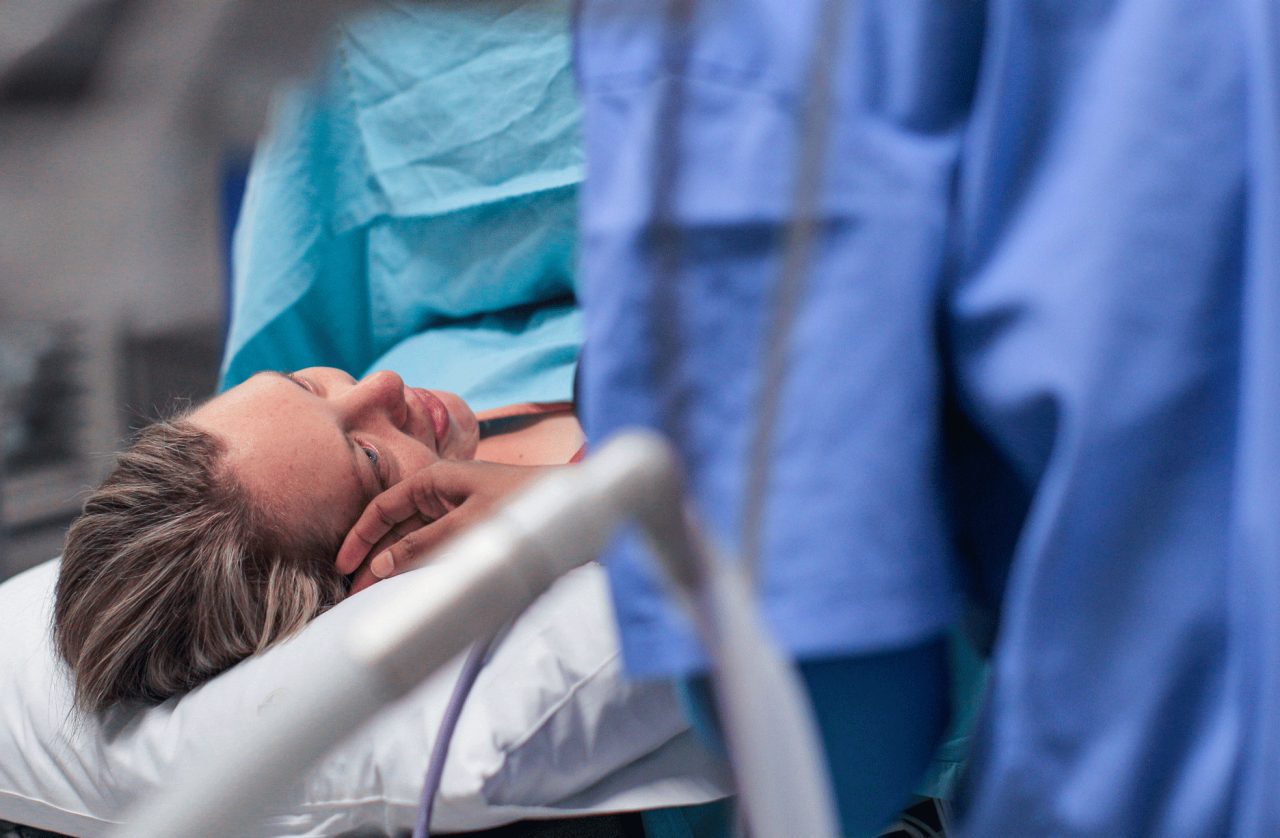What Is a C-Section?

About a third of all babies born in the United States are delivered surgically via cesarean section, or C-section, usually due to complications.
What is a C-section?
Usually, babies are born through the mother’s vagina. In a C-section — also called a cesarean delivery or cesarean section — your doctor makes an incision in your abdomen and your uterus and lifts out your newborn.
About a third of U.S. babies are born this way. C-sections happen most often when complications arise during labor, making a delivery through the vagina a risk for the mother or child. A C-section might be the best choice if your baby’s head is too big for the birth canal, or the feet or shoulders are coming out first.
Normally, your baby’s head should be near your vagina and facing your back. Problems with the umbilical cord or the placenta could make a vaginal delivery risk. With placenta previa, the placenta blocks your cervix. If the placenta detaches from your baby too soon, you have an abruption.
You may also have a C-section to avoid complications of prolonged labor due to slow thinning of your cervix or if you’re having more than one baby.
Your medical team will monitor the heart rate of your baby during labor. If it falls below 120 or goes above 160 beats a minute, your team will swing into action. You might need oxygen or more fluid, but, if the heart rate doesn’t fall into the normal range, you may need a C-section.
YOU MIGHT ALSO LIKE: What Is Preeclampsia?
Who might plan a C-section in advance?
Mothers with high blood pressure, diabetes, an HIV infection, or heart disease might be at risk from a vaginal delivery. If you are having a multiple birth or have had a C-section in the past with a vertical incision, you might plan on a C-section in advance. Another possible situation is when you have active herpes sores in your vagina or cervix that could infect your baby.
It is not a good idea to ask for a C-section simply so you can schedule a convenient time and avoid uncertainty about when your baby will be born. Overall, a C-section, which is major surgery, is riskier than a vaginal birth. It should be considered only in advance if you have specific reasons that make the case against vaginal delivery. A C-section could lead to infection, injury to other organs, and blood clots.
You’ll probably need to stay in the hospital for up to four days to recover and need other people to care for your new baby.
How is a C-section performed?
Before the surgery, your doctor will arrange to have blood available in your blood type in case you need a transfusion. Your abdomen will be cleaned. Be prepared to receive fluids through an IV in your arm and to be given a catheter for urine so your bladder can’t fill up. You cannot eat for eight hours before a planned C-section.
Your legs will be strapped to the table and the hair around the surgical site may be shaved.
Three kinds of anesthesia may be at hand: a spinal block that is injected directly into the sac that surrounds your spinal cord and numbs your lower body; an epidural, which is injected into your lower back to numb certain regions of your body; or general anesthesia that puts you to sleep. General anesthesia is usually only for emergencies.
Your bottom half will be draped so you won’t see the surgery happening even if you are awake. The first incision is made just above the pubic hairline, usually horizontally. A vertical incision is used in emergencies. (The scar from a vertical incision won’t hold up during labor so if you become pregnant again you will need another C-section.) After moving through layers of tissue, your doctor will reach the uterine wall. The incision there will also be either horizontal or vertical.
Your newborn can be taken out of the uterus through the second incision. Your doctor will clear your baby’s nose and mouth of fluids and clamp and cut the umbilical cord. Once your baby is breathing normally, you can hold your new child in your arms.
It is possible to agree in advance for your doctor to tie your tubes so you cannot become pregnancy again.
Both incisions will be sewed up.
What happens after a C-section?
Plan on staying in the hospital at least three days and possibly four. You’ll stay on the IV drip giving you painkillers but can get up and walk around (this helps prevent blood clots and constipation). You’ll be taught how to breastfeed with the least possible pain from the incision.
Over the next few weeks, you’ll need to avoid sex, use correct posture, take pain medications if needed, and seek help if you become sad or extremely tired.
Seek medical care if you have breast pain with a fever, a bad-smelling discharge from the vagina, or pain when urinating. If the incision becomes red or swollen or you see a discharge or have a fever over 100 F, you may have an infection and should speak with your doctor.
Updated:
May 23, 2022
Reviewed By:
Janet O’Dell, RN